Trees Birds Mammals Fish Amphibians Reptiles
Wild Algarve
Bookshop
Ramaria botrytis (Pers.) Ricken - Rosso Coral
Phylum: Basidiomycota - Class: Agaricomycetes - Order: Gomphales - Family: Gomphaceae
Distribution - Taxonomic History - Etymology - Identification - Culinary Notes - Reference Sources
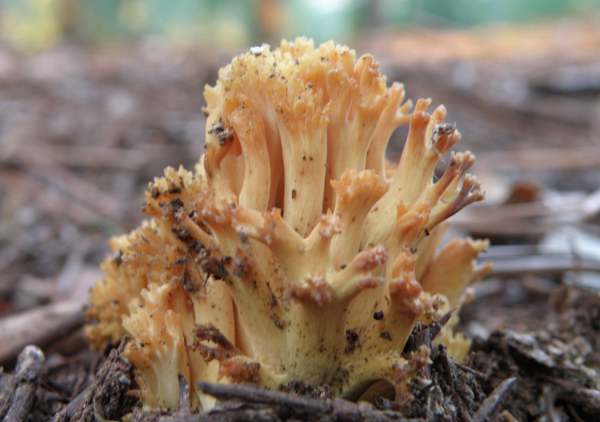
This distinctive stout red-tipped (or occasionally purplish- or orange-tipped) coral is a rare find in Britain and Ireland, where it favours Beech woodland dominated by old trees, with which it forms ectomycorrhizal relationships.
In those (generally warmer than Britain) parts of the world where Rosso Coral is more common, its cauliflower-like fruitbodies can be found not only in broadleaf woodland but also in coniferous forests, particularly with pine trees.
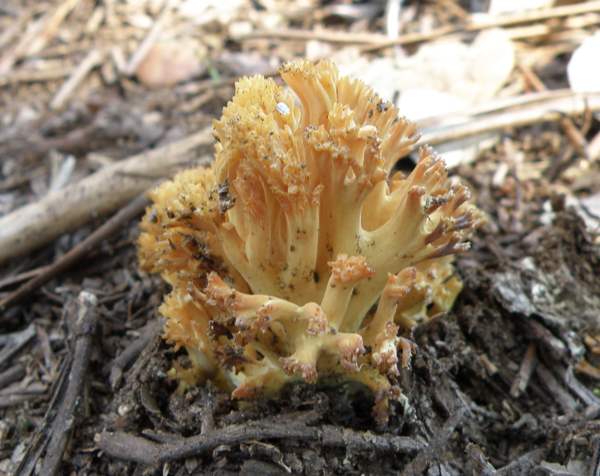
Distribution
Seen only rarely in Britain and Ireland, and most often in southern England, Ramaria botrytis occurs also throughout most of mainland Europe, where it is increasingly common towards the Mediterranean and the Iberian Peninsula. Rosso Coral occurs also in woodlands in many parts of North America.
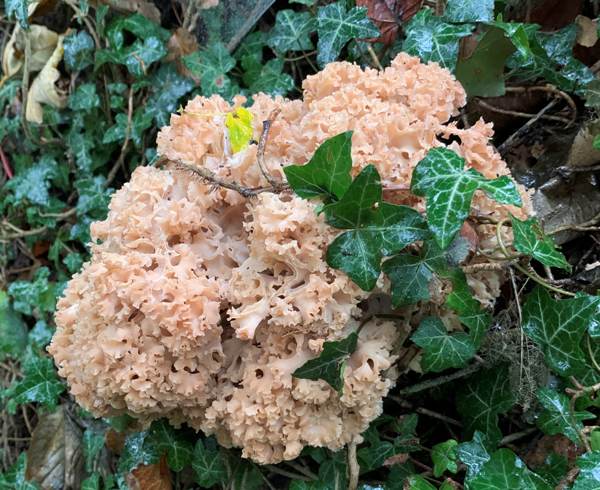
Taxonomic history
Rosso Coral fungus was described in 1797 by Christiaan Hendrik Persoon, who gave it the scientific name Clavaria botrytis. It was German mycologist Adalbert Ricken (1851 - 1921) who in 1918 redescribed this species under its currently-accepted scientific name Ramaria botrytis.
Synonyms of Ramaria botrytis include Clavaria botrytis Pers., and Clavaria botrytis var. alba A. Pearson.
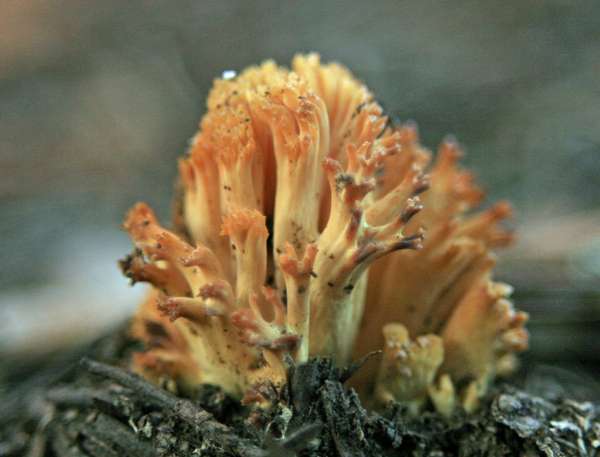
Etymology
Ramaria, the generic name, comes from Ram- meaning branch, with the suffix -aria meaning posessing or furnished with. Ramaria coral species are indeed furnished with numerous branches.
The specific epithet botrytis is derived from the Latin for a 'bunch of grapes', and I can only assume that Christiaan Hendrik Persoon, who created the basionym of this species, had not seen a vineyard in anything other than years of the most disappointing harvests.
There are several very similar Ramaria coral species and they are very difficult to identify with certainty. Microscopic examination of spores and basidia is essential in most instances. The chunky white base of Ramaria botrytis (pictured in the ID section below) is one of its most helpful distinguishing features.
Identification guide
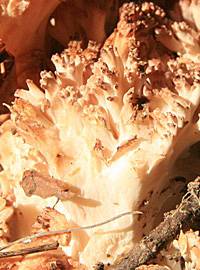 |
Fruitbody
A short, stout stem divides and redivides to form a cauliflower-like structure with terminal branches ending in two to four flattened tips with rounded rather than sharp ends.
The tips are reddish, while the lower branches and stem are much paler and almost pure white near ground level and below.
The flesh is white. 8 to 15cm tall and up to 20cm across the whole fruitbody. |
| |
Spores
Elongated ellipsoidal to subfusiform, with slightly twisted longitudinal shallow striations, 13-19 x 5-7.5µm; inamyloid.
Spore print
Pale yellow. |
Odour/taste |
No significant odour but a mild and fruity taste. |
Habitat & Ecological role |
Under Beech and occasionally other deciduous hardwood trees. |
Season |
July to November in Britain and Ireland; through to the New Year in southern Europe. |
Similar species |
Ramaria formosa is pink or orange but its branches are much narrower and more upright. |
Culinary Notes
Rosso Coral is edible, but these are such rare finds that collecting should be discouraged. (In the UK Red Data List produced by Shelly Evans et al. in 2006, the Conservation Status of Ramaria botrytis is Near Threatened.)
Acknowledgements
This page includes pictures kindly contributed by Jon Riches.
Reference Sources
Pat O'Reilly, Fascinated by Fungi, 2016.
Dictionary of the Fungi; Paul M. Kirk, Paul F. Cannon, David W. Minter and J. A. Stalpers; CABI, 2008
Taxonomic history and synonym information on these pages is drawn from many sources but in particular from the British Mycological Society's GB Checklist of Fungi.
Top of page...
Fascinated by Fungi. Back by popular demand, Pat O'Reilly's best-selling 450-page hardback book is available now. The latest second edition was republished with a sparkling new cover design in September 2022 by Coch-y-Bonddu Books. Full details and copies are available from the publisher's online bookshop...